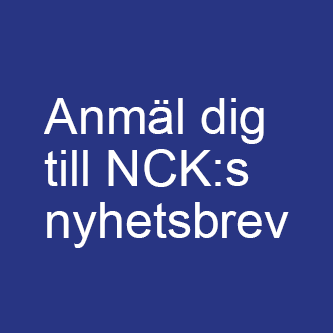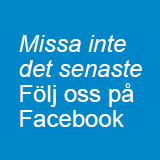Digital Solutions for Applied Heritage – Exploring Transnational Learning Opportunities was a project funded by the Erasmus+ Strategic Partnership program, that ran 2021-23. In this project, heritage institutions accustomed to time travel methods and roleplaying games experimentally developed digital variants. The project aimed at using digital solutions in order to transform the usually exclusively local time travel into a transnational experience.
The Nordic Centre of Heritage Learning and Creativity (Sweden) was coordinating the project, and project members were Kalmar County Museum (Sweden), Jamtli (Sweden), The Ostrobothnian Children’s Culture Network BARK (Finland), Estonian National Museum (Estonia) and Audentes School (Estonia).

The most significant results
> A handbook for museum professionals
Digital Pedagogy at Museums for Increased Participation and Co-creation: A Handbook for Museum Professionals. NCK wrote this book directed toward museum professionals who want to expand and innovate their work in outreach through digital means. The book also gathers many of the insights we learned from the project! Learning, participation, and co-creation are central concepts in the book. The book is relevant for people holding different capacities at the museum: especially museum educators, exhibition producers, communicators, and museum directors. This does not mean that only museum professionals would find the book useful. What works in a museum context can often be adjusted to other contexts as well.
> A transnational time travel
Everyone participating in the project carried out a joint transnational time travel between the 3rd of May and the 17th of May 2023. We connected 164 eighth grade students and 30 teachers in Estonia, Sweden and Finland through a set of interconnected events, some online, some on-site. The goal was to use transnational storytelling to move beyond the story of the nation and stimulate a learning that can build bridges across national boundaries, emphasizing European connectivities. As there are no similar programs developed, it was highly innovative.
Because of the very worrying development with war in Europe, we choose to focus on the following questions: How is it to be a teenager when the world is on fire? What does home and belonging mean when in war or in crisis? What can you do, and what does it mean, to help others who are fleeing war or another difficult situation?
The time travel went to 1944, at the end of WWII, which we used to critically reflect upon and discuss the contemporary situation with a terrible war close to our borders. A video showing parts of the process behind the scenes.
> A Digital Time Travel to 1991
Estonian National Museum and Audentes School made this digital time travel to 1991 is designed as a game environment. The topic is the re-independence of the Republic of Estonia, focusing especially on the date August 20, 1991, when the Supreme Council of the Republic of Estonia declared independence.
The principles are as follows:
- The target group is classes 9-12
- the game is based on 6 characters (university student, member of Estonian defence ally, communist Party activist, school principal, housewife, young money jobber) who open the historical event from different points of views
- it is structured in the format of an escape room: the previous task must be solved before the next one can be started
- there is a common introductory and final task for the whole class
- the class is divided into groups and each group chooses two characters
- there are 3 tasks for each
This output is nominated for the 2023 Estonian Museums Annual Award in the museum education category, and the winner will be announced in January 2024. We are crossing our fingers!
Link to the Digital Time Travel (in Estonian).
Estonian National Museum and Audentes School also developed “toolkits” for students and teachers so that they could successfully participate in the digital time travel to 1991, mentioned above.
Toolsets for teachers (in Estonian)
Toolsets for students (in Estonian)
> Jamtli developed a pedagogical program ”Preparedness” for grade 9. It is a historic roleplay about Preparedness Time in Sweden during the WWII. The time period is used as a tool to reflect upon and discuss the situation in Europe due to the war in Ukraine, with a focus on the Ukrainian refugees, the effects on the rest of Europe, and young people’s reactions on this. For schools on long distances from the museum (and as an alternative during the pandemic) a fully digital version of the program has been developed, where Teams has been used from a studio setting. The program was piloted in October 2022 with 28 school classes and with three classes in the fully digital version.
> Jamtli also developed “Hello artist”, which is a digital resource for schools, suitable for grade 4-9, that can be used in the classroom. The purpose is to create a tool for pupils to discover artists and their art in an exciting way and as an inspiration to their own creativity. The material can be used in three ways:
- Led by a museum art-educator at the museum or in the classroom
- As a digital live meeting, led by the museum art-educator, sent from a studio
- Used in the classroom by the teachers and pupils
The material presents a Swedish female artist, active at the end of the 19:th century. It´s presented on the digital platform Prezi. In four videos the pupils get to meet the artist, played by one of Jamtlis historical actors. The videos are combined with tasks that can be done in full class or separately by the pupils.
The resource is available from here (in Swedish and English)
> Digital platforms for teachers and students
Kalmar County Museum developed digital platforms for teachers and students, to help prepare for their participation in a Time Travel. The platform is a combination of text and 360-films that helps the students to get involved in the time period, the theme and the key questions for the Time Travel. The digital platform can be used to broaden the picture and to widen the understanding of a certain time. The content of the digital platform has been developed with the help of the national curriculum, interviewing teachers and letting student test the platform. In addition, a series of films were made to teachers, introducing the Time travel method in a Swedish context.
Platform 1 for students (in Swedish)
Platform 2 for students (in Swedish)
Platform for teachers (in Swedish)
> Two pedagogical programs
BARK (Children’s Cultural Network in Ostrobothnia) developed two pedagogical programs, one being interdisciplinary and one being co-creative. The interdisciplinary Time Travel included a props package, which can be delivered to the school and then the school can watch a video on the digital Time Travel themselves, with the teachers as leaders. The target group was an elementary school, grades 5-6. They worked with a special needs school, Hietalahden koulu, which has pupils with both physical and mental special needs. The scenario took us back to 1885, with national symbols as the theme. The student meets an artist, who shows their craft/art, and after each meeting, the video can be stopped and the pupils in the school can do the same craft/art with the props brought to the school. There was also a very thorough material produced for the teachers, so they would be able to do this in the school. Hietalahti school is a Finnish speaking school, so the film and material were done in Finnish.
The co-creative Time Travel is pedagogical program where many schools work together in a co-creative way on the same theme. This Time Travel model was done with 3 junior high schools in Ostrobothnia with 1-2 classes from each. The theme chosen was the Homefront 1944, as it was very engaging and urgent considering the war in Ukraine. Students could do research on, and co-create, their own time travel, and present the results in various media, for example through TikTok reels. The co-creation process was very popular among the students, and they got engaged in research and interviews. This result had a clear impact on both the schools as well as the archives/libraries and was a platform for creativity and innovation.

